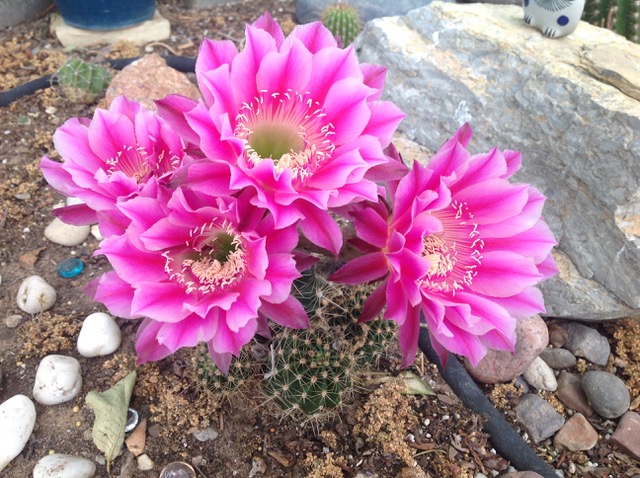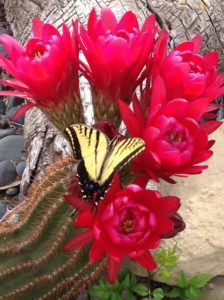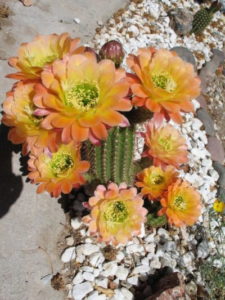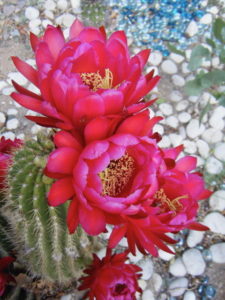by Alice Parra, El Paso Master Gardener
Why would anyone want to grow cacti? Two reasons: ease of care and great beauty.
Cacti, native only to the Americas, are a type of succulent (water-retaining plant) adapted to arid climates or soil conditions. They are easy to grow and offer a variety of shapes, color, and form and can be grown in your garden, containers or rock gardens.
All cacti are succulents but not all succulents are cacti. All the plants in the cactus family are members of the Cactaceae family.
The cactus family is very distinctive. Their flowers are very different from those of all other plant families. After reaching maturity, cacti will flower every year, some several times a year. Every cactus plant has areoles, even if you can’t see spines. An areole is the radial arrangement of spines on pad-like buds where shoots and flowers may appear.
Cacti are at home in arid and semi-arid areas. Cacti have three climatic seasons: February to May, when they grow; June to September, when they flower and bear fruit; and fall and winter, when they rest. When we grow cacti we should try to replicate these conditions for best results. Our seasonal pattern of summer rains and drier winters will help cacti flourish and then rest before starting anew in the spring. There are several cacti that are cold hardy for this area. Three examples of these are the prickly pear (Opuntia spp.), claret cup (Echinocereus triglochidiatus), and rainbow cactus (Echinocereus pectinatus).
Even though there is a misconception that cacti do not need water because they grow in deserts, they do need a little water to survive. To grow cacti you need soil with good drainage. Check the root zone for dryness about an inch deep weekly for watering needs. Expect hot weather to create the need for more frequent watering.
Fertilize lightly in the spring. A weak (half-strength) solution of a soluble fertilizer is preferred.
Six to eight hours of sunlight produces the best blooms. Some cacti prefer sunlight to be indirect or dappled sunlight over direct sun. Learn what your cactus prefers and place it accordingly in your landscape.
Cacti may be propagated in various ways, one of which is from cuttings of stems or pads. If using cuttings, let them air dry for a week or two to allow the cut edges to callous so the plant will be protected from most soil-borne diseases. Cacti may also be propagated from seeds and from offsets or offshoots (“pups”). When propagating from cuttings or offsets, plant in well-draining soil and do not water for a week after planting. Wet the soil enough to encourage new roots to form but not so much that the plant is over-watered and begins to rot. You’ll know to water again when the soil is dry at one inch deep or a little further. Learn more cacti care tips in this article on propagating cacti from Arizona Cooperative Extension.
El Paso County Master Gardeners, the Native Plant Society of New Mexico (El Paso Chapter), and the El Paso Cactus and Rock Club are excellent resources to provide further information on native plants and cacti. You can also find more articles about cacti and succulent care on our Gardening Topics-Links page.
Images:
All cacti photos are by Alice Parra, El Paso Master Gardener
Cacti identification in lower photos, from left to right:
Torch Cactus (Trichocereus spp.) with Butterfly
Prickly Pear (Opuntia spp.)
Torch Cactus (Trichocereus spp.) [Orange]
Torch Cactus (Trichocereus spp.) [Dark Pink]





